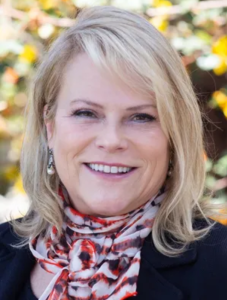
As a community college president, I have the privilege of witnessing the transformative power of education every day. As I start to advance toward my retirement and reflect, there is one issue that continues to weigh heavily on my mind: the underrepresentation of women in leadership roles.
Throughout history, women have confronted systematic barriers to leadership roles, including limited access to education, discriminatory hiring practices, and societal norms favoring male leadership. Despite these challenges, women have persistently broken barriers and shattered glass ceilings, demonstrating their capability and resilience across diverse fields.
In higher education, we have seen strides in increasing the representation of women in executive leadership roles. However, there is still a long way to go. According to a study by the American Council on Education, women make up only 30% of college and university presidents. This underrepresentation both limits the diversity of perspectives in leadership and sends a message to young women that their potential is limited. Furthermore, current presidents do not mirror the student body demographics at colleges and universities.
Historically, institutions of higher education barred women from admission. Oberlin College in Ohio challenged the gender barrier in 1837, becoming the first college in the nation to admit women. This marked a significant milestone in the journey toward gender equality in education. It is particularly noteworthy considering that it came more than two centuries after the founding of Harvard College, the oldest institution of higher education in the United States. This transformative moment at Oberlin College laid the foundation for a more inclusive and diverse educational landscape, setting a precedent for other institutions to follow in the pursuit of equal educational opportunities for all.
As women gained access to higher education, a parallel advancement was seen in their representation within the workforce of higher education institutions. Between 1870 and 1930, the percentage of women employed in higher education rose significantly, reaching 14% of all female workers, a figure which remained relatively stable through the 1970s. Despite these challenges, women continued to make strides in higher education, contributing their talents and expertise to the academic community and paving the way for greater gender diversity and inclusivity in academia.
I greatly admire the women who have bravely navigated and shattered the glass ceiling in higher education. Their journey has been challenging, but their perseverance and determination have paved the way for progress. In 2005, Dr. Robin Calote became the first female president of Ventura College. "It was an honor to serve as Ventura College's first female president. Looking back, I feel my training and experiences in facilitation and communication served me well in this challenging role, particularly during the state's budget crisis. I'm glad I've had the opportunity to see the evolution of community college leadership in California, and to note that the milestone of becoming the ‘first female’ anything is becoming a thing of the past!"
Dr. Erika D. Beck, a dear friend and inspiring leader, is at the forefront of educational excellence as she leads the charge at California State University, Northridge, the 4th largest CSU in the state. Recognized as one of the Most Influential Leaders in Education by the Pacific Coast Times and honored as Woman of the Year by the California Women’s Caucus, Dr. Beck exemplifies a commitment to empowering women in leadership. She proudly notes, “It is our collective responsibility to cultivate talent and leadership throughout higher education so that more women ascend to positions of influence. All of society benefits when we include the diverse voices, rich perspectives and lived experiences of those reflected in the communities we so proudly serve.”
It is crucial for institutions of higher education to actively work toward gender parity in leadership. This includes implementing policies that promote gender equity, providing mentorship and professional development opportunities for women, and creating a culture that values and supports women in leadership positions.
As a community college president, I am committed to fostering an environment where women can thrive and lead. I have seen firsthand the incredible impact that women in leadership can have on our students, faculty, and community. It is time for us to break down the barriers that hold women back and create a future where leadership is truly inclusive and representative of our diverse society.
This Women's History Month, let us celebrate the achievements of women in leadership and recommit ourselves to creating a more equitable and inclusive world for all. Together, we can break barriers and empower women to lead with courage, compassion, and conviction.